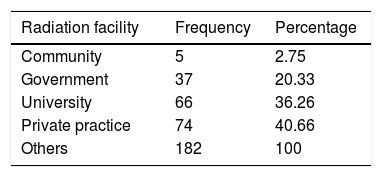In the past few years, there has been a rapid rise in the use of radiopharmaceuticals. It is increasingly becoming a vital factor in diagnosis and treatment. Our knowledge of the standard operating procedures of the nuclear pharmacy department in different hospitals is largely based on limited data. The research aims to evaluate the attitude of the staff and Pharmacy interns regarding the safety programs of the radiopharmaceutical department in selected hospitals. The study used the descriptive –quantitative method in which questionnaires were distributed to 182 pharmacists and pharmacy interns. They were randomly chosen; inclusion criteria is that they must be on-duty or working in the hospitals selected by the researcher. The validity of results was ensured by asking the pharmacy interns to answer the questionnaires at least 2 weeks after they started their internships, using their batch schedule as a guide. Feedbacks were simultaneously listed and updated. The results were recorded and organized in the Microsoft Excel spreadsheet. Percentage results for each area were recorded. The attitude of the staff and pharmacy interns on the safety programs in the radiology department of selected hospitals was categorized as: strongly agree, agree, disagree, and strongly disagree. From the assessment and figures of data, it appeared that out of 182 respondents there were 56.59% agree that staff must have sufficient educational training in the proper usage of the equipment in the radiology department, 48.35% agree that appropriate orientation of safety programs must also be implemented. Most of the respondents agree to the safety programs, and most were identified to exhibit a need to have proper knowledge in the radiology department. The respondents’ performance and attitude in safety programs were interpreted to have a moderate relationship. There is a significant difference in the attitude and safety programs in the radiology department. Thus the null hypothesis is rejected. The staff must wear personal protective equipment when they enter the radiology room. To further assess the relevance of safety programs, future researchers can broaden the research by giving emphasis on other programs and correlating it to the attitude of students in other areas or subjects.
Artículo
Comprando el artículo el PDF del mismo podrá ser descargado
Precio 19,34 €
Comprar ahora

















